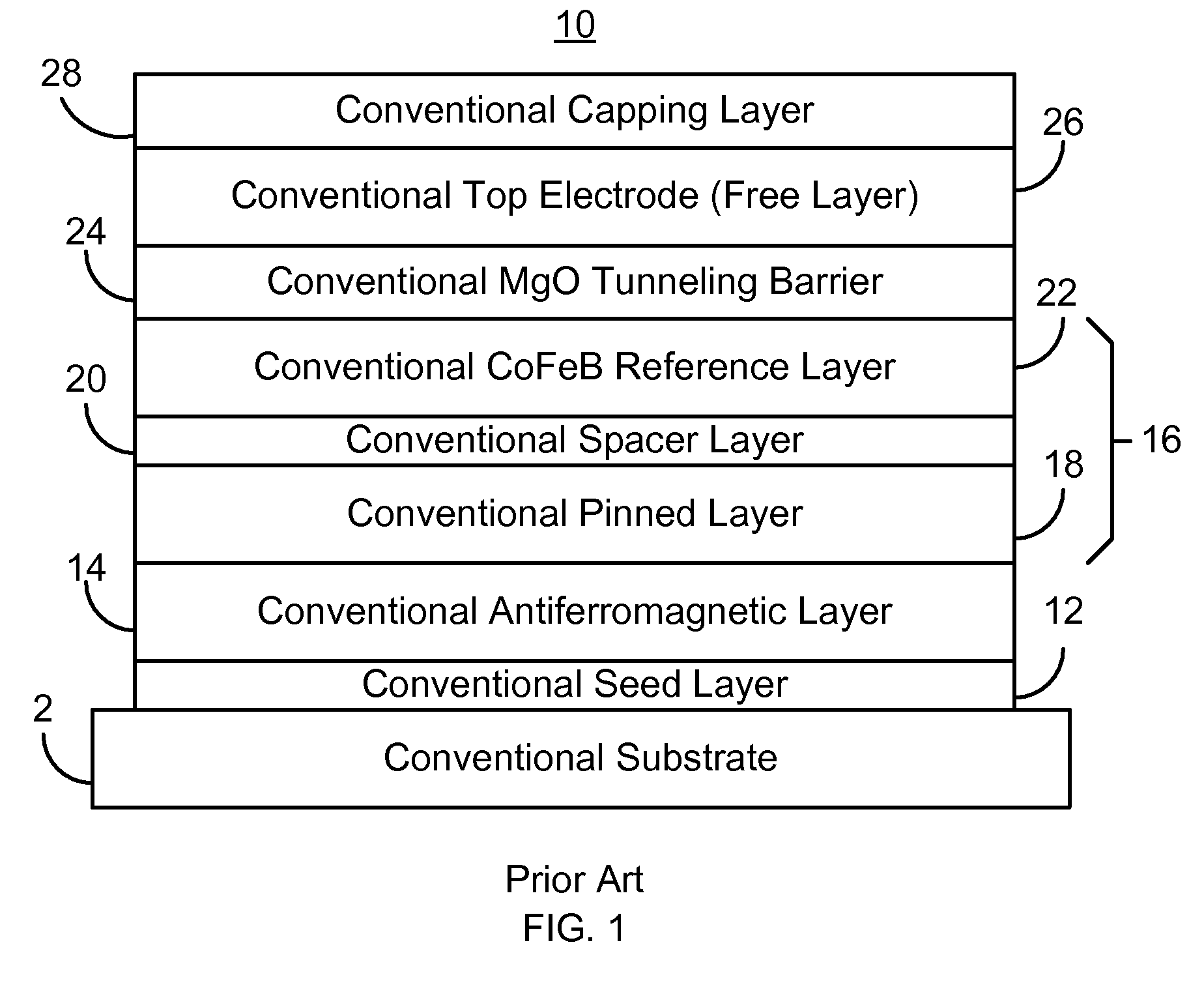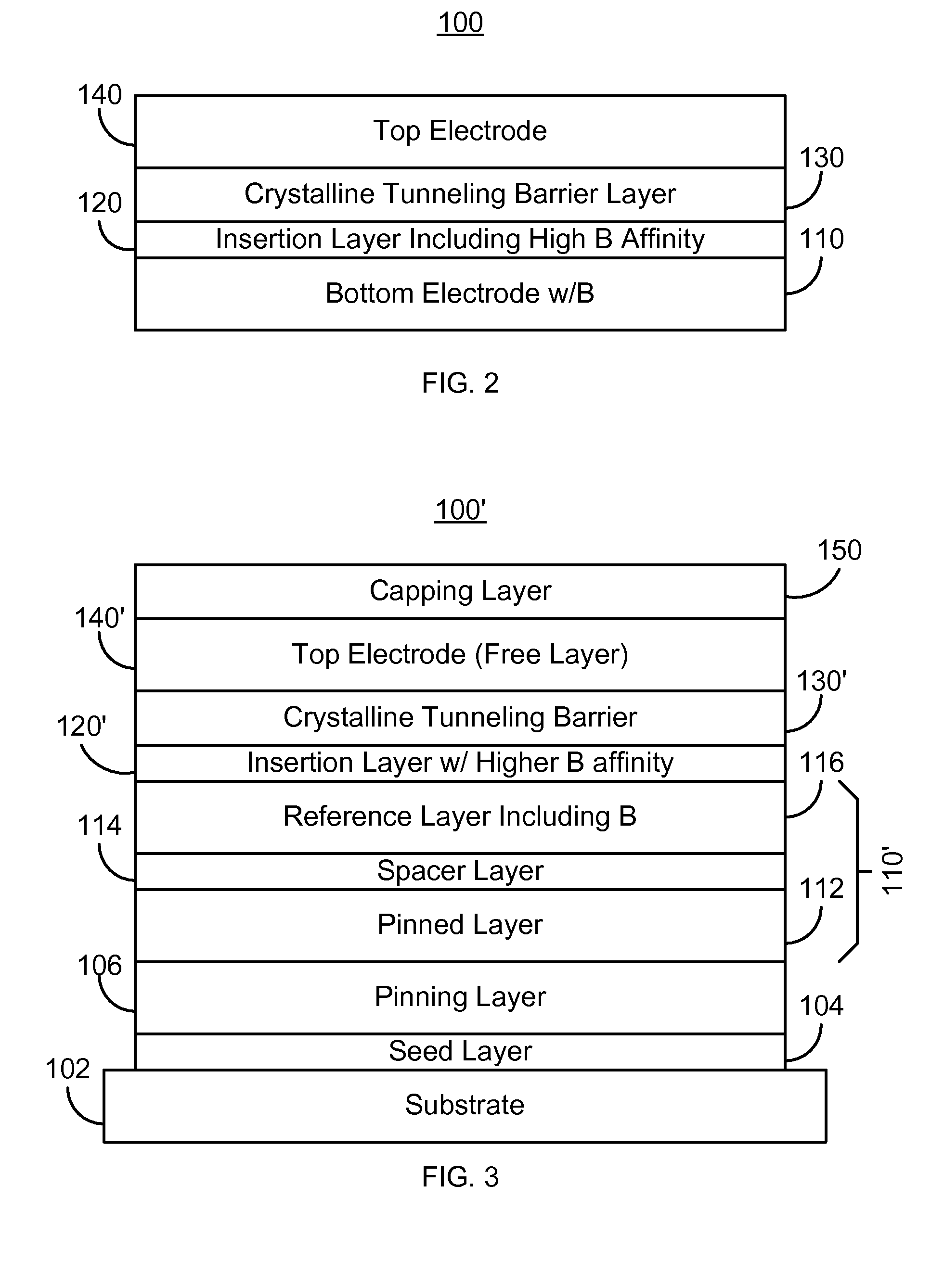Method and system for providing a magnetoresistive structure
a technology of magnetoresistive structure and tunneling magnetoresistive element, which is applied in the field of conventional tunneling magnetoresistive element 10 and can solve the problems of adversely affecting the performance of the conventional tmr element b>10/b>, and affecting the properties of the conventional tmr elemen
- Summary
- Abstract
- Description
- Claims
- Application Information
AI Technical Summary
Benefits of technology
Problems solved by technology
Method used
Image
Examples
Embodiment Construction
[0012]FIG. 2 depicts an exemplary embodiment of a magnetic structure 100. The magnetic structure 100 is a tunneling magnetoresistive (TMR) element. For clarity, the magnetic structure 100 is described in the context of a single TMR element. However, in another embodiment, a dual TMR element (not shown) or other analogous structure might be used. For simplicity, FIG. 2 is not drawn to scale.
[0013]The magnetic structure 100 includes a bottom electrode 110, an insertion layer 120, a crystalline tunneling barrier 130, and a top electrode 140. In one embodiment, the bottom electrode 110 is a pinned or reference layer, while the top electrode 140 is a free layer. In another embodiment, the bottom electrode 110 may be a free layer while the top electrode 140 is a pinned, or reference layer. The magnetic structure 100 is described in the context of the bottom electrode 110 being a pinned or reference layer and the top electrode 140 being a free layer.
[0014]The bottom electrode 110 is a pinn...
PUM
| Property | Measurement | Unit |
|---|---|---|
| thickness | aaaaa | aaaaa |
| thickness | aaaaa | aaaaa |
| temperature | aaaaa | aaaaa |
Abstract
Description
Claims
Application Information
 Login to View More
Login to View More - R&D
- Intellectual Property
- Life Sciences
- Materials
- Tech Scout
- Unparalleled Data Quality
- Higher Quality Content
- 60% Fewer Hallucinations
Browse by: Latest US Patents, China's latest patents, Technical Efficacy Thesaurus, Application Domain, Technology Topic, Popular Technical Reports.
© 2025 PatSnap. All rights reserved.Legal|Privacy policy|Modern Slavery Act Transparency Statement|Sitemap|About US| Contact US: help@patsnap.com



